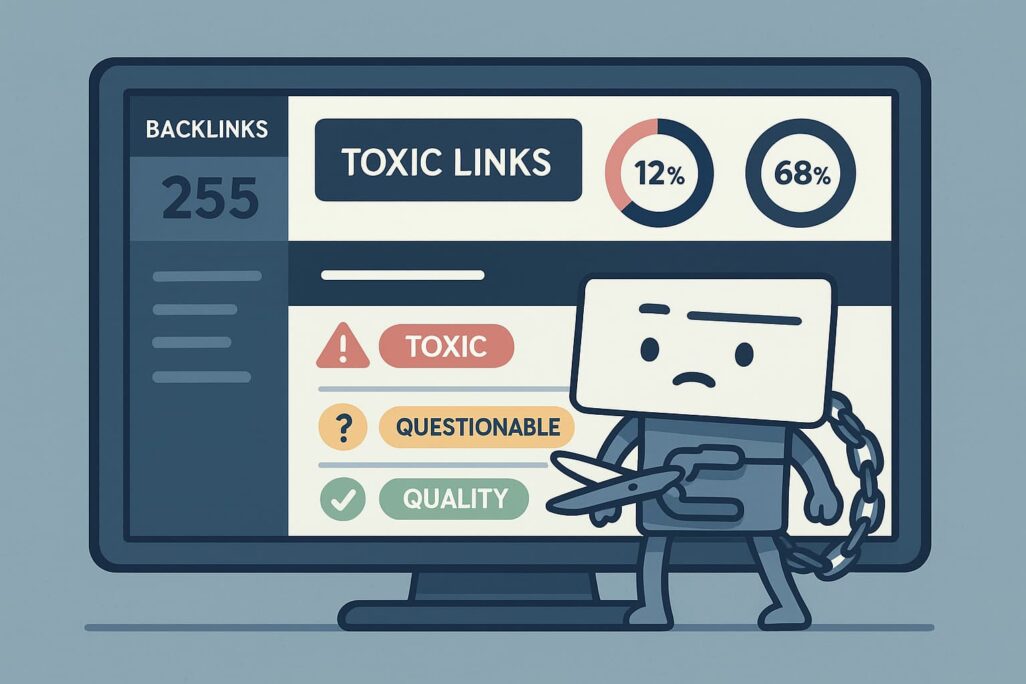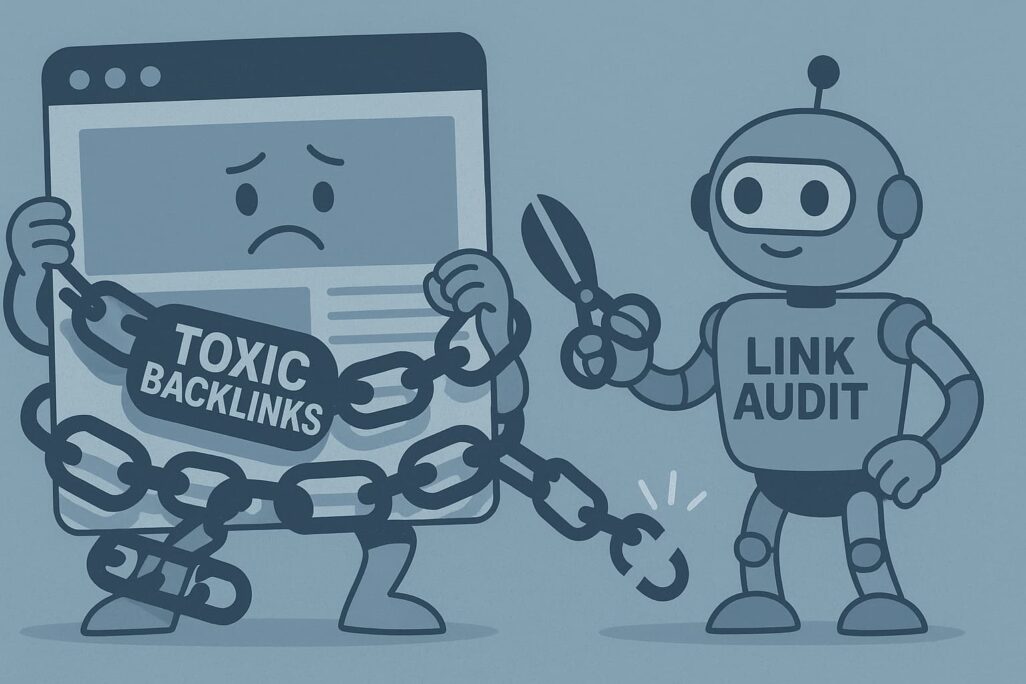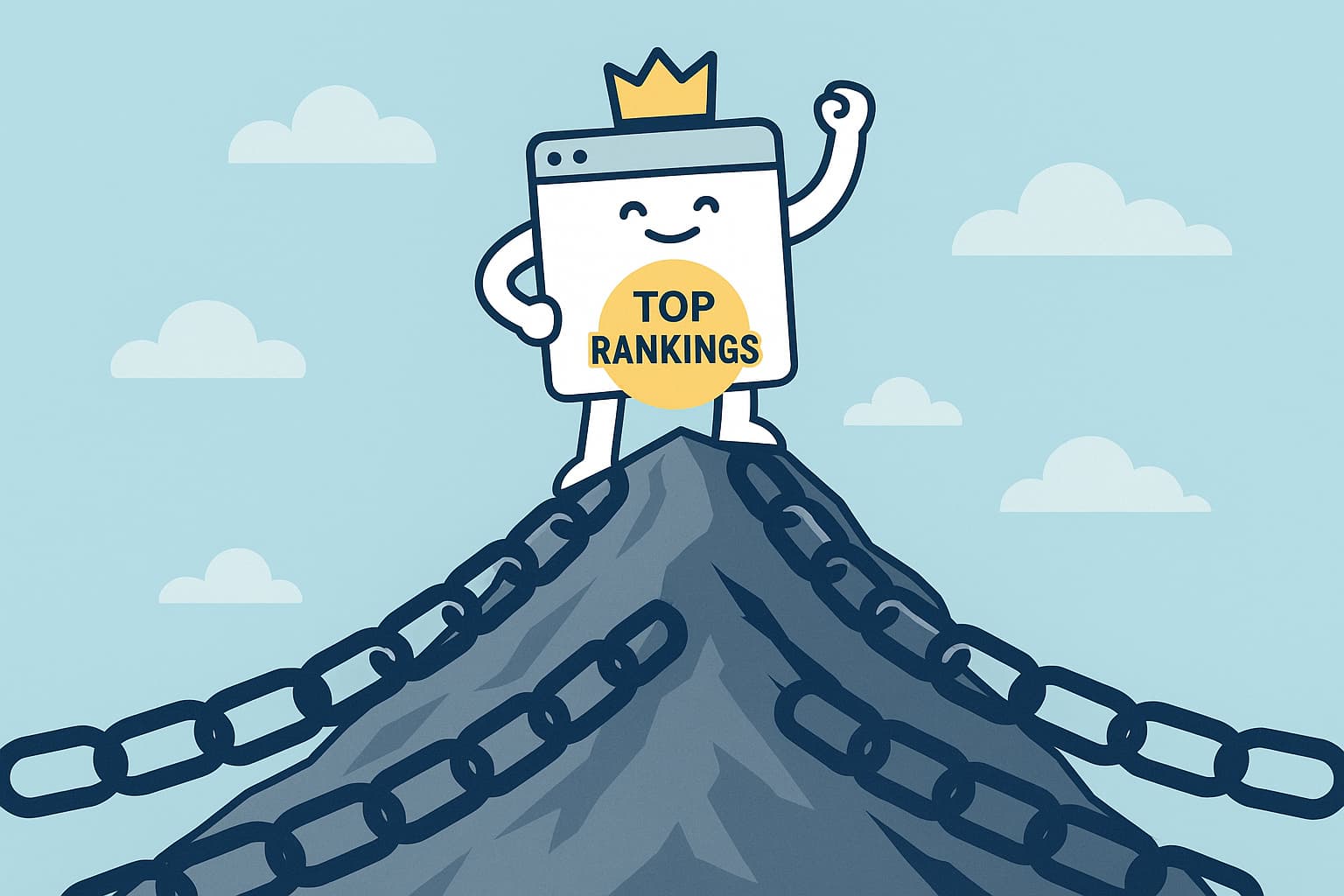Top search rankings require a strong backlink profile, but not all links are beneficial. The performance of your website might be negatively impacted by spammy or low-quality backlinks, which can lead to search engine penalties. You may improve your entire SEO strategy and identify and remove bad connections with the aid of a professional link building audit service.
Why a Link Audit is Necessary
Search engines treat backlinks like votes of confidence — the right ones boost your authority, but the wrong ones can trigger serious consequences. While quality links from reputable sites help you rank higher, problematic links can:
- Drag down your rankings in search results
- Trigger Google penalties (both algorithmic and manual)
- Undermine your legitimate SEO efforts
- Make your site appear untrustworthy to search engines
A professional link audit spots these issues and outlines what needs to be done to fix them.
What a Link Building Audit Service Covers
A thorough backlink audit includes several key steps:
1. Comprehensive Backlink Analysis
The analysis starts by examining every backlink using professional SEO tools like Ahrefs, Moz, and SEMrush. These platforms scan the internet to find all links pointing to your website — from blog references and news coverage to business directories and social media shares.
Each link gets evaluated based on important quality factors:
- The authority and credibility of the linking website
- Potential spam risk level
- Relevance to the site’s content
- Actual traffic value
This careful sorting separates the high-quality, helpful links from low-value or potentially harmful connections that could damage search rankings.
2. Spotting Harmful Links
Some backlinks cause more harm than benefit. A comprehensive audit looks for toxic links from questionable sources, such as spam-filled websites, unscrupulous link networks, adult content sites, or domains that Google has already punished. These are frequently the result of dangerous techniques such as link purchasing, secret blog networks, and bulk directory submissions. Once detected, you may either contact webmasters and request removal or disavow them through Google to safeguard your rankings.
3. Checking Anchor Text Balance
The words used in your backlinks matter more than you might think. A healthy profile mixes:
- Branded terms (your company name),
- Natural phrases (“click here”),
- Some keyword-rich text.
Too many commercial keywords (like “cheapest insurance rates”) raise red flags. The audit spots these unnatural patterns and suggests fixes to keep your link profile looking organic to search engines.
4. Learning From Competitors
If competitors consistently outrank you, their backlinks might hold the secret. The audit compares your link profile with theirs, showing exactly where you’re falling short. You’ll see which reputable sites are linking to them but not you — giving you clear targets for outreach. This smart comparison helps focus your efforts on the most valuable linking opportunities in your industry.
5. Actionable Recommendations
The final audit report doesn’t just highlight problems—it gives you a clear action plan for growth. You’ll get practical recommendations like:
- Toxic Link Removal — How to disavow or remove damaging backlinks.
- Link Profile Strengthening — Strategies for gaining quality links through guest articles and PR.
- Competitor Gap Targeting – Sites linking to competitors that are worth pursuing.
- Ongoing Monitoring – Tips for tracking new links and avoiding future penalties.
A professional link audit transforms raw backlink data into a strategic SEO plan, helping you to reduce risks while establishing a stronger, more authoritative link profile.
Take 3XE Digital‘s link audit and removal service, for instance. They conduct thorough backlink profile scans, evaluating link quality, anchor text patterns, and how your links stack up against competitors. When they identify harmful links, their team takes action — personally reaching out for removals and preparing disavow files when needed. But they don’t stop there. Based on their audit results, they provide customized link-building suggestions to help clients strengthen their overall SEO approach.
The Risks of Ignoring a Link Audit
Your backlink profile has a significant impact on how search engines rank your website. If it includes low-quality or questionable connections, the reputation falls. Ignoring the health of your backlinks exposes your site to risks that can harm visibility and performance.
One of the biggest risks is a drop in search rankings. Toxic or spammy backlinks can drag your site down, especially if they’re part of an outdated SEO strategy—or worse, placed intentionally by competitors trying to harm your site. Search engines like Google are quick to catch on to unnatural patterns.
There’s also the possibility of penalties. If Google flags your site for having manipulative or shady backlinks, you could receive a manual penalty. Recovering from that isn’t quick or easy. You’ll need to identify the bad links, submit a disavow file, and wait for Google to review your case.
And even if you’re actively building good links, all that effort can go to waste if your existing profile looks suspicious. Google might choose to ignore new backlinks if it doesn’t trust the overall quality of your link profile.
Running regular audits helps you catch these issues early. It lets you remove harmful links, strengthen your profile, and make sure your SEO work actually delivers results. Skipping this step puts your traffic, rankings, and long-term strategy at risk.
When a Link Audit Becomes Urgent

Regular link audits are good practice, but sometimes you can’t afford to wait. Here are five situations that call for immediate attention:
1. Sudden Drop in Rankings or Traffic
If your traffic or rankings tank without a clear reason, toxic backlinks could be the issue. An audit can quickly find and fix harmful links. In rare cases, it could even be a negative SEO attack from a competitor. Don’t wait—acting fast can help you recover sooner.
2. You Think You’ve Been Penalized by Google
If Google Search Console shows a manual penalty or you notice signs of an algorithmic penalty, your first move should be to examine your backlinks. A thorough audit will help you:
- Identify problematic links;
- Disavow harmful ones;
- Prepare a reconsideration request if necessary.
3. Site Redesign or Domain Migration
Big site changes can bring hidden link problems to the surface. An audit before the move helps you keep strong links, remove harmful ones, and avoid broken links after the transition.
4. Switching SEO Providers
Changing SEO agencies? Start with a link audit. It gives your new team a clean slate and ensures they don’t continue with outdated or shady link-building tactics.
5. Buying or Selling a Domain
If you’re buying, an audit shows whether the domain has risky backlinks that could hurt you later. If you’re selling, cleaning up the link profile adds value and prevents future issues.
When these moments hit, quick action can protect your rankings and save you from long-term SEO damage.
Steps to Take After a Link Audit

Although a link audit identifies problems, fixing them is what makes your SEO better. Concentrate on three crucial actions: removing problematic links, developing reliable alternatives, and instituting ongoing oversight. This strategy maintains your ranks and encourages sustained website growth.
1. Removing Toxic Links: Cleaning Your Backlink Profile
Finding harmful backlinks is just the beginning—the real work comes when you need to remove them. The most direct approach? Contacting webmasters and requesting link removals. Here’s how to do it right:
- Compile a list of harmful backlinks.
- Find contact details for each website.
- Send professional removal requests to the webmasters.
Since many site owners won’t respond immediately, follow up politely but persistently. Keep detailed records of all communication—you may need this if you ever have to submit a reconsideration request to Google.
But what if a webmaster ignores you, or the site is inactive? In those cases, use Google’s Disavow Tool to tell Google to disregard those links. However, be cautious—only disavow genuinely harmful links, not just low-quality ones. Also, ensure your disavow file is formatted correctly to avoid accidentally blocking good links.
After submitting the file through Google Search Console, be patient—it can take weeks to see changes in rankings. Monitor your performance closely during this time.
By taking these steps, you’ll clean up your backlink profile, protect your rankings, and set the stage for stronger SEO growth.
2. Building High-Quality Links: Strengthening Your Profile
After removing harmful backlinks, your next priority should be acquiring high-quality, authoritative links. The most valuable links come from respected websites in your industry that voluntarily link to your content because it’s genuinely helpful to their audience. To attract these links, focus on creating outstanding, well-researched content that addresses unmet needs in your field — content that’s so useful other sites will naturally want to reference it.
Guest posting and niche edits can also be effective when done right. The secret? Only target reputable, relevant websites and focus on delivering actual value to their readers — never approach link-building as just another SEO task to check off your list.
For even greater results, consider digital PR. Establish yourself as an industry expert by:
- Creating newsworthy content;
- Responding to journalist requests (like HARO);
- Sharing expert insights on trending topics.
This strategy can earn you backlinks from major publications.
Another smart tactic is broken link building:
- Find dead links on authoritative sites in your niche;
- Create a better version of the missing content;
- Politely suggest your resource as a replacement.
It’s a win-win—you help site owners fix broken links while securing a spot on trusted websites.
3. Monitoring Backlinks: Ongoing Protection and Maintenance
Your backlink profile requires regular maintenance, not just periodic fixes. While Google Search Console provides basic data, it’s not enough for deep analysis. For more detailed insights, use advanced tools like Ahrefs, SEMrush, or Moz.
Here’s how to stay on top of your backlink health:
- Set up spike alerts — sudden surges might mean someone’s targeting you with spammy links.
- Schedule monthly reviews — catch small issues before they become big problems.
- Prepare your defense— have a clear action plan and pre-written templates ready for when you spot shady links.
Long-term SEO success comes from balance:
- Blocking harmful links before they hurt you
- Building quality links to grow your authority
Backlinks are a trust indication for Google; therefore, ignoring them might result in fines or lost ranks. By remaining watchful, you may maintain a robust, natural link profile that promotes long-term organic development. Remember: consistent monitoring equals long-term SEO success.
Conclusion
A professional link-building audit service is an excellent investment for long-term SEO success. It assists in detecting bad backlinks, enhancing your link profile, and avoiding penalties. Regular audits, whether conducted in-house or by outside consultants, help keep your SEO strategy on track.
If you don’t know where to start, consider having a comprehensive audit from a trusted source to ensure your backlinks are working for you rather than against you.



